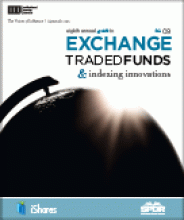Abstract
ETFs have become very popular investment instruments for mirroring specific portfolios of securities. They offer many of the advantages of open-end index mutual funds, but are unique in that they can be purchased or sold continuously while the stock exchange is open. Furthermore, ETFs can be shorted and therefore allow ETFs to temporarily hedge other investment portfolios or capitalize on expected share price declines in particular sectors or country markets. While closed-end funds can be shorted, their market values tend to differ substantially from their corresponding net asset values because of the lack of liquidity of the underlying securities within the portfolio. ETFs can accommodate a wide variety of investor risk profiles. Since ETFs commonly reflect portfolios of stocks, they are also subject to behavioral finance tendencies, including potential momentum, overreaction, and pricing corrections. In general, ETFs that focus on a narrow sector should have higher potential return and higher risk than ETFs that represent an entire market, because they are less diversified. Thus, narrow-sector ETFs should be more sensitive to general stock market conditions. However, not all sectors or countries are alike, so the performance and risk of ETFs are conditioned on the sectors or countries that they represent.
- © 2009 Pageant Media Ltd
Don’t have access? Register today to begin unrestricted access to our database of research.








